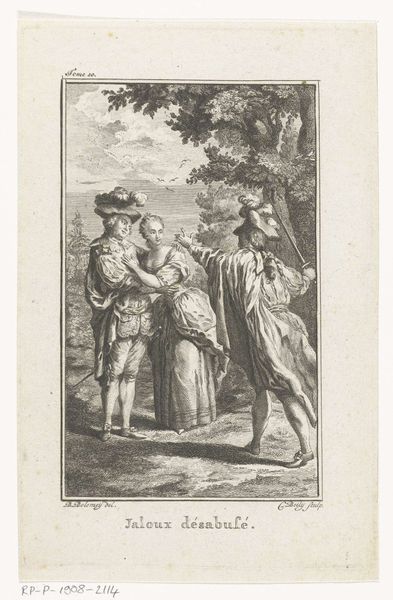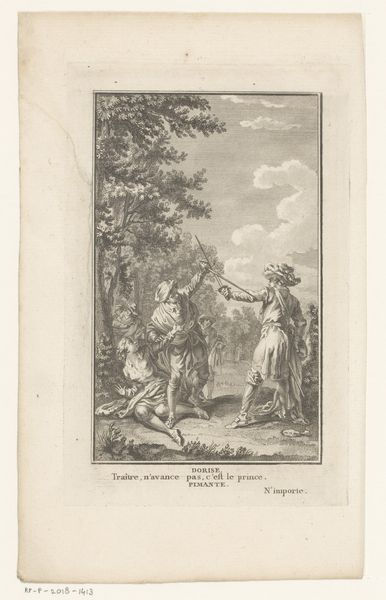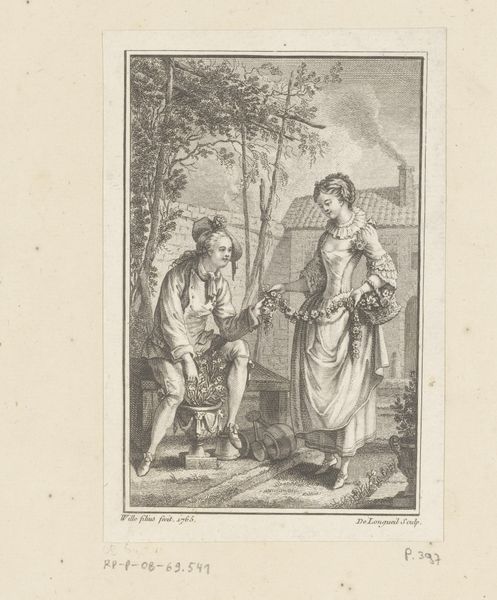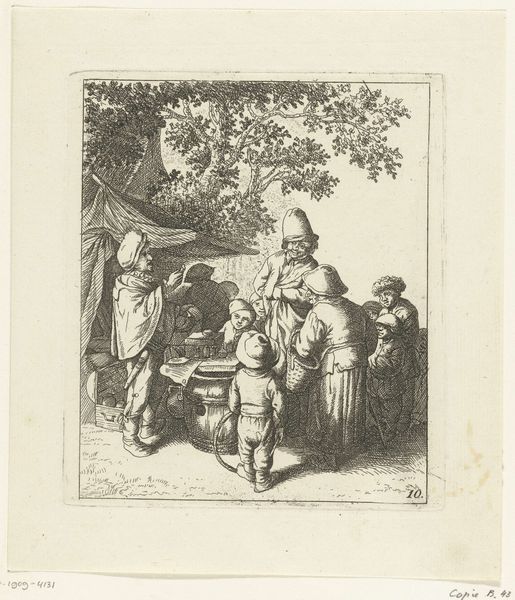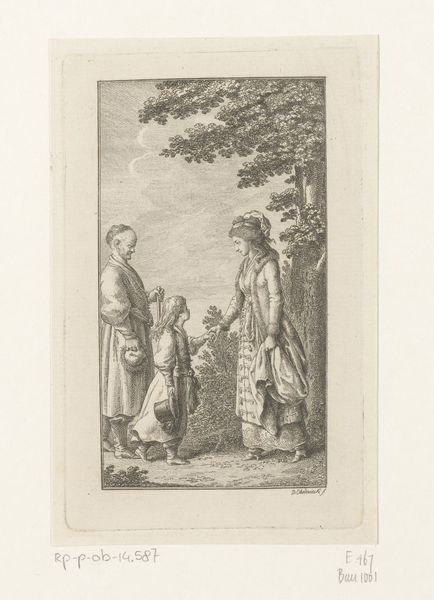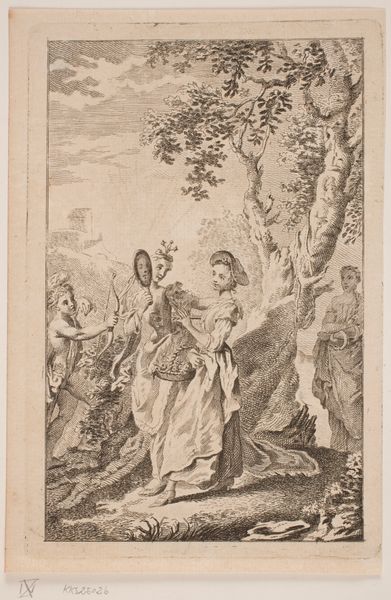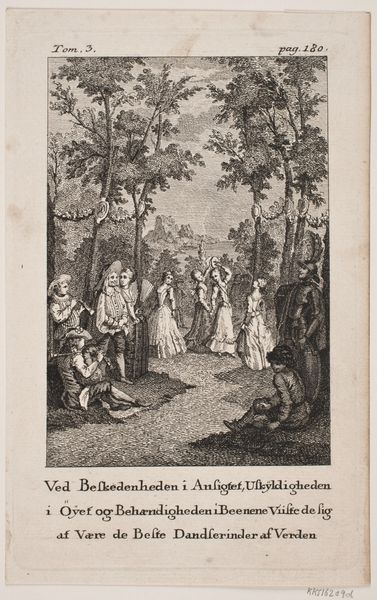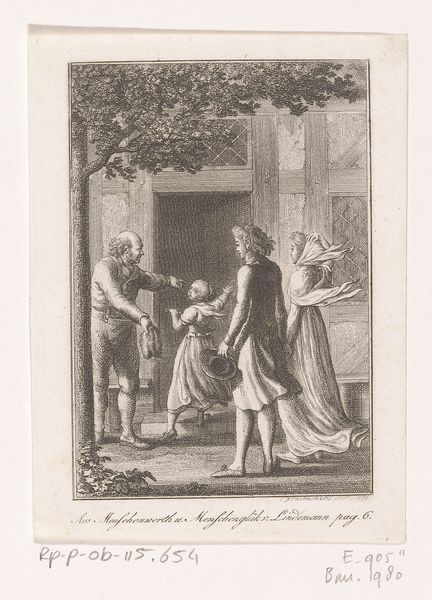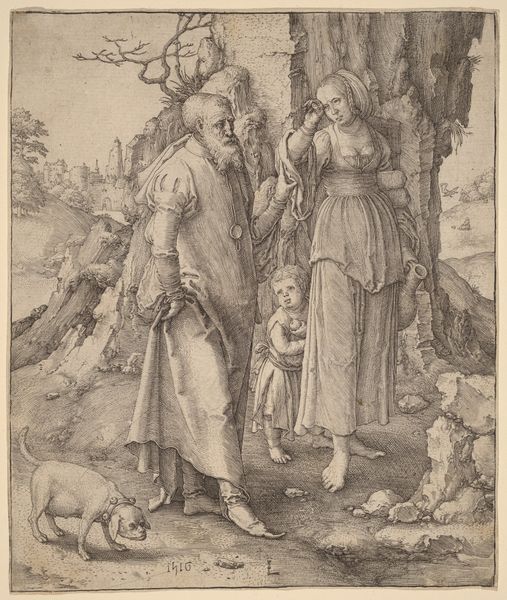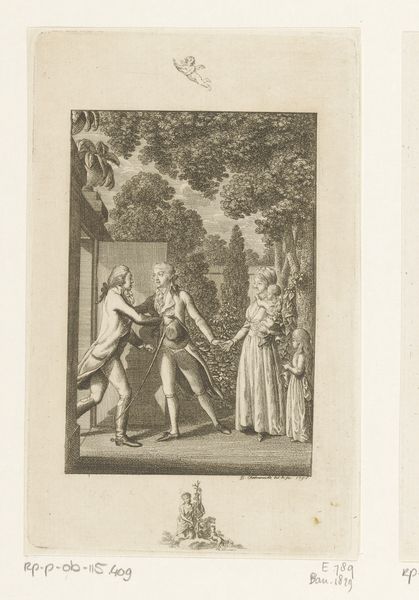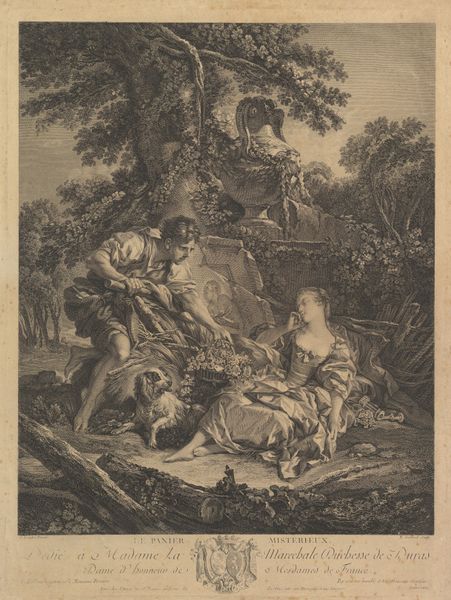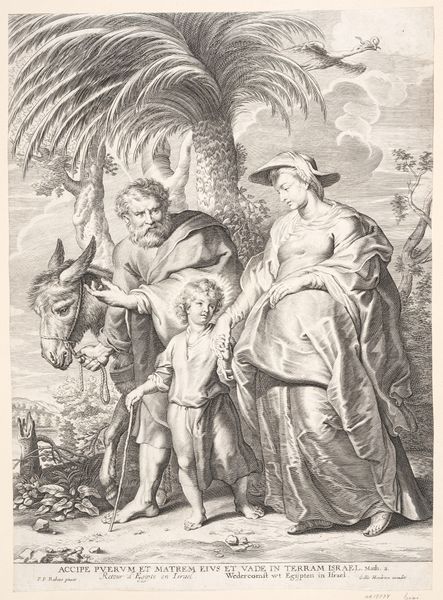
Ung kvinde, som tager en lille dreng ved hånden, mens en mand med stok ser på 1784
0:00
0:00
print, engraving
#
portrait
# print
#
genre-painting
#
engraving
Dimensions: 134 mm (height) x 805 mm (width) (bladmaal)
Editor: This print by Georg Christian Schule, made in 1784, titled "Young woman taking a boy by the hand while a man with a cane watches". It feels like a very staged and formal family portrait, but rendered in such a delicate way. What strikes you most when you look at it? Curator: What I notice is the intergenerational aspect presented through symbolic gestures. Observe the gaze: The young woman looks down, perhaps protectively, while the elderly man observes them both. What do these linked gazes signify, culturally speaking, in 1784? Editor: I suppose it could represent a passing down of knowledge, or a visual metaphor for familial responsibility? The boy is literally being guided, shown the way. Curator: Precisely! And notice how the artist places them within a landscape. Trees and open sky are recurring symbols for growth, heritage and the cyclical nature of life. This links directly to family lineage. What about the fact that it is an engraving, a print? Does that say anything about who would have been looking at this, its role in society? Editor: Well, prints were more accessible than paintings. Perhaps this image served as a kind of moral exemplar for middle-class families? A visual guide to proper familial conduct? Curator: An astute observation! These domestic scenes often provided a framework for understanding social roles. And remember, the very act of portrayal—who is included, how they're positioned—contributes to the larger cultural narrative. Do you agree that this small engraving carries the heavy weight of social expectation? Editor: Definitely! I didn’t realize there were so many layers within what seemed to be just a simple family scene at first glance. Curator: Visual culture holds so much within it. Paying attention unlocks a deep reservoir of historical and personal experience!
Comments
No comments
Be the first to comment and join the conversation on the ultimate creative platform.
